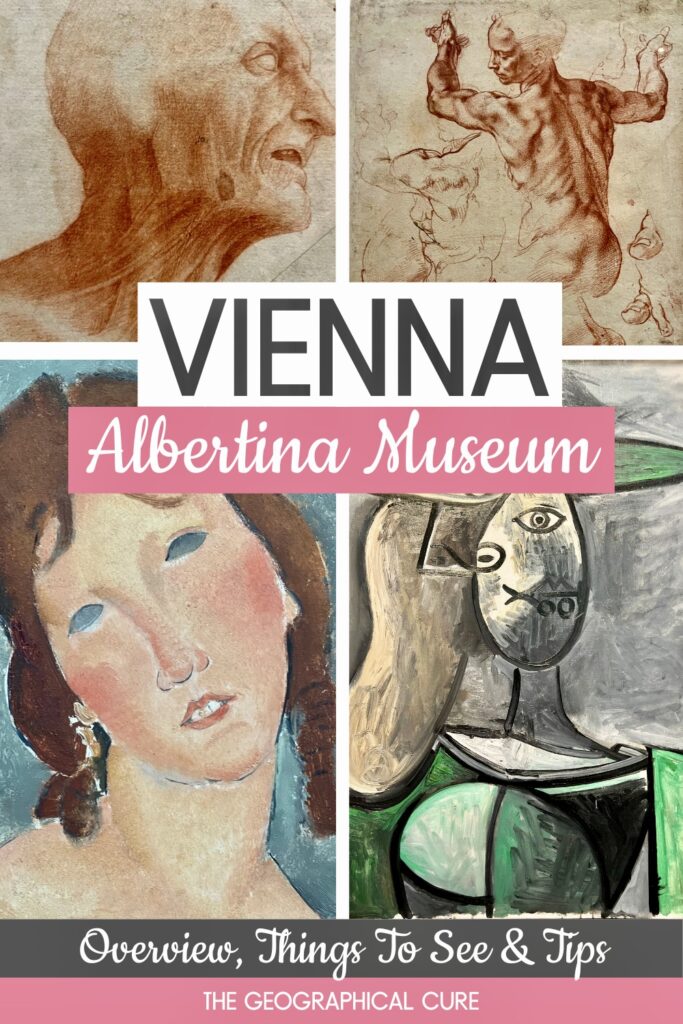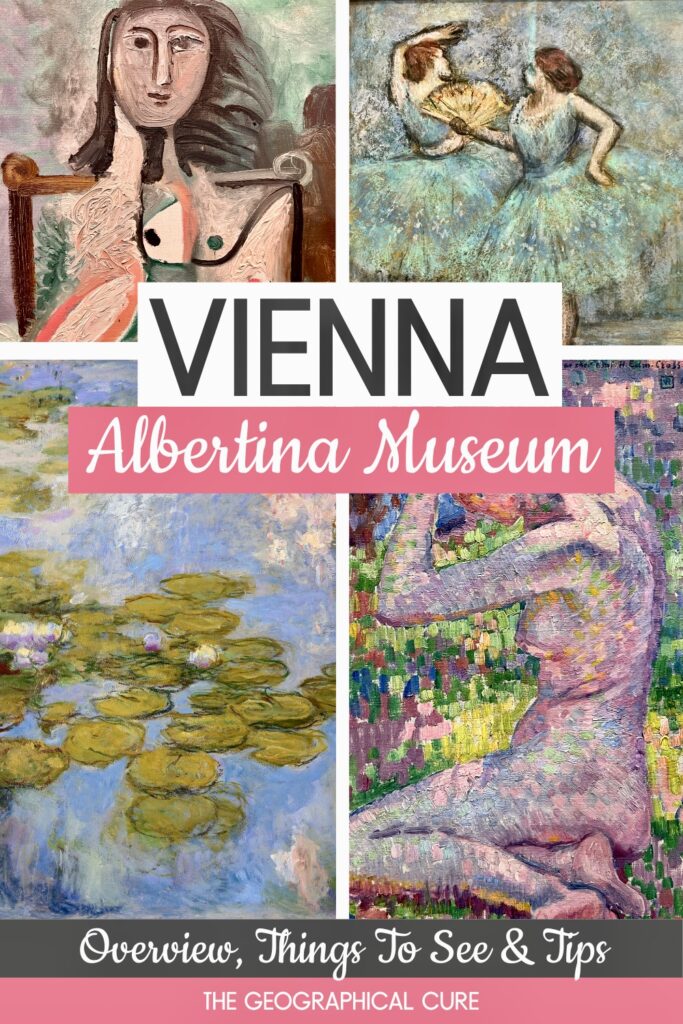Vienna’s Albertina Museum is a renowned cultural institution located in the heart of the city. It houses one of the world’s most extensive and impressive collections of graphic art and early Modernism.
I thought the museum was brilliant. It’s my new favorite museum in Vienna.
The Albertina is mid-size, so won’t swallow up your day. The museum’s vaults contain beautiful artworks by Michelangelo, Raphael, Dürer, Picasso, Monet, and the German Expressionists. It will remind you what drawing can really be.
To top it off, the museum is housed in a Baroque palace built for Maria Christina, the favorite daughter of Empress Marie Theresa. And you can tour the luxe imperial apartments.
In this guide to the Albertina, I give you an overview of the museum, identify and describe must-see masterpieces, and provide insider tips to ensure you have an amazing visit.
>>> Click here to pre-book a ticket
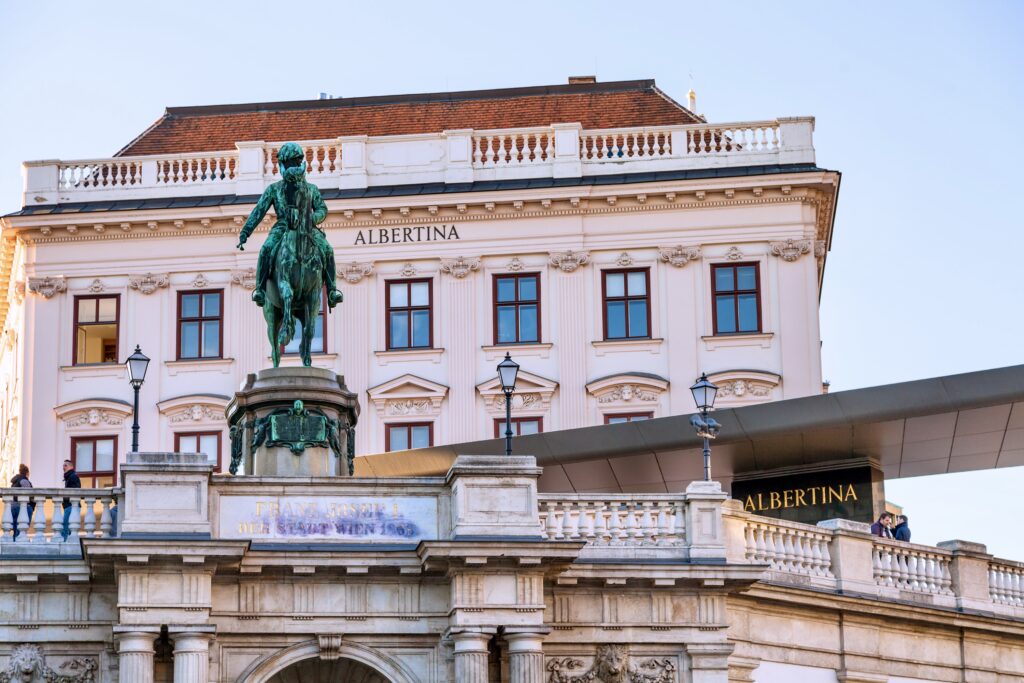
Overview Of The Albertina
You take a long escalator up to the museum entrance. There, a viewing platform offers up nice views, especially of the Staatsoper and the Memorial against war and fascism in the square.
The museum is the second largest museum in Vienna, after the Kunsthistorisches. The artworks are roughly divided into four different sections. There is literally something for everyone’s taste.
You’ll see:
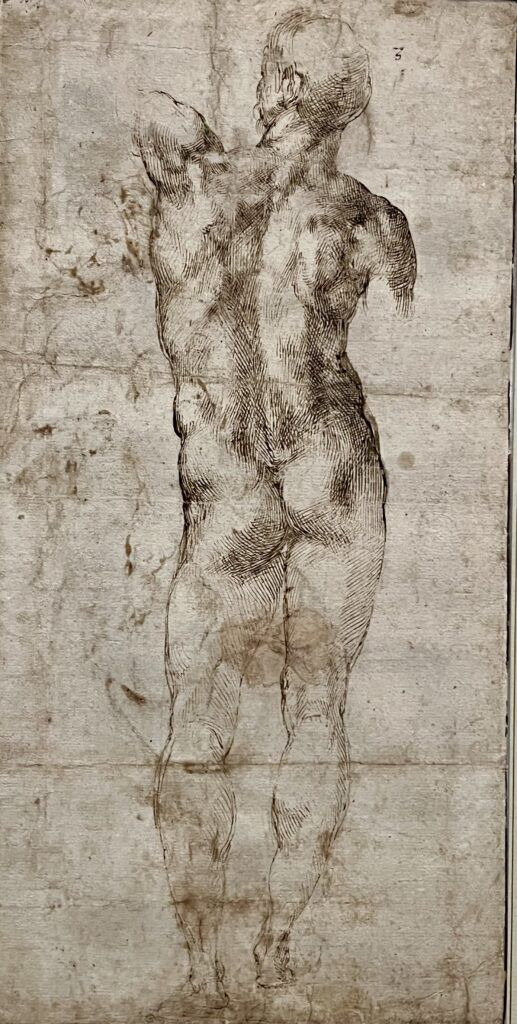
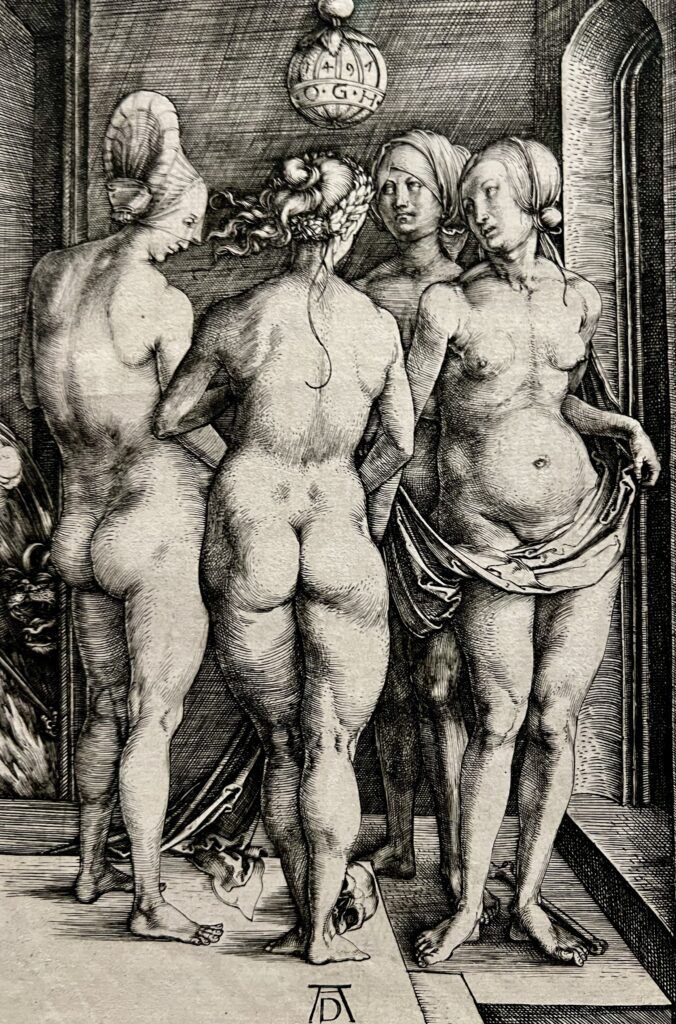
Drawings (ground floor)
The Albertina is particularly renowned for its impressive collection of drawings.
The collection includes works by master artists like Leonardo da Vinci, Michelangelo, Raphael, Albrecht Dürer, and Egon Schiele. There are over 1 million drawings and prints from the late Gothic Period to the present.
Monet to Picasso Exhibit (1st floor)
This exhibit features European paintings and sculptures from the late 19th to the mid-20th century. It includes works by renowned artists such as Claude Monet, Pierre-Auguste Renoir, Vincent van Gogh, Marc Chagall, and Pablo Picasso.
They were bequeathed to the museum in 2007 by Herbert Batliner. It’s one of the world’s most important collections of modern art.
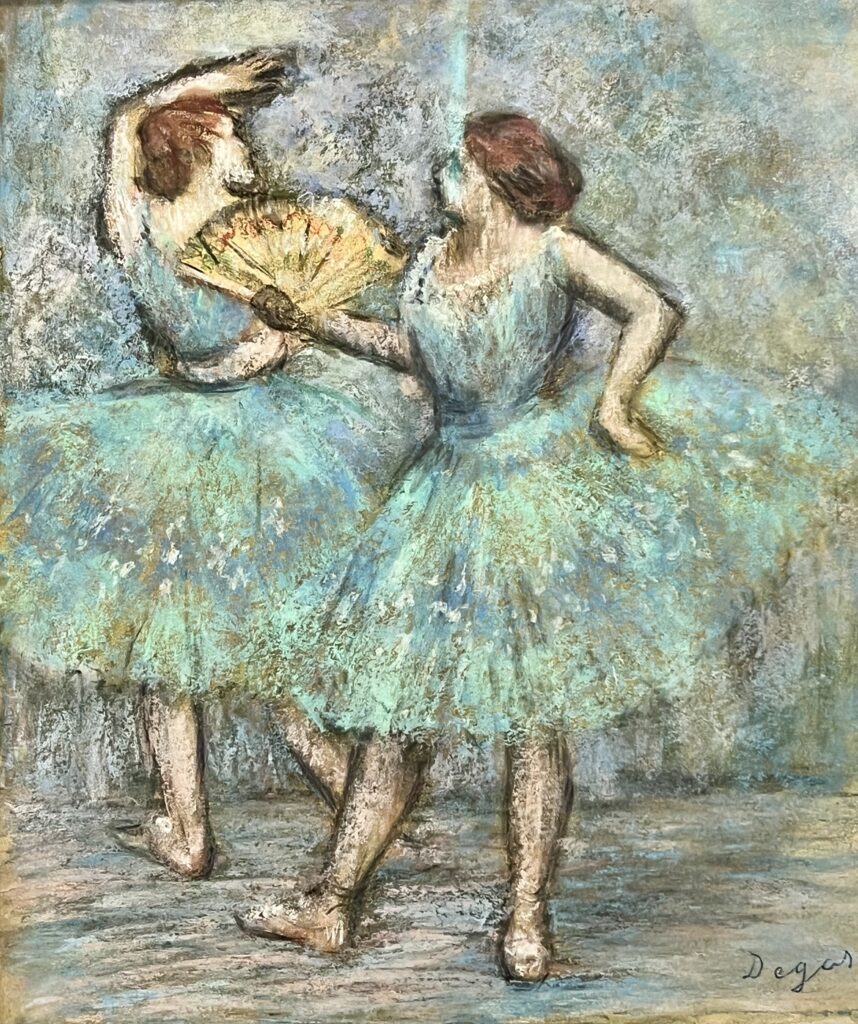
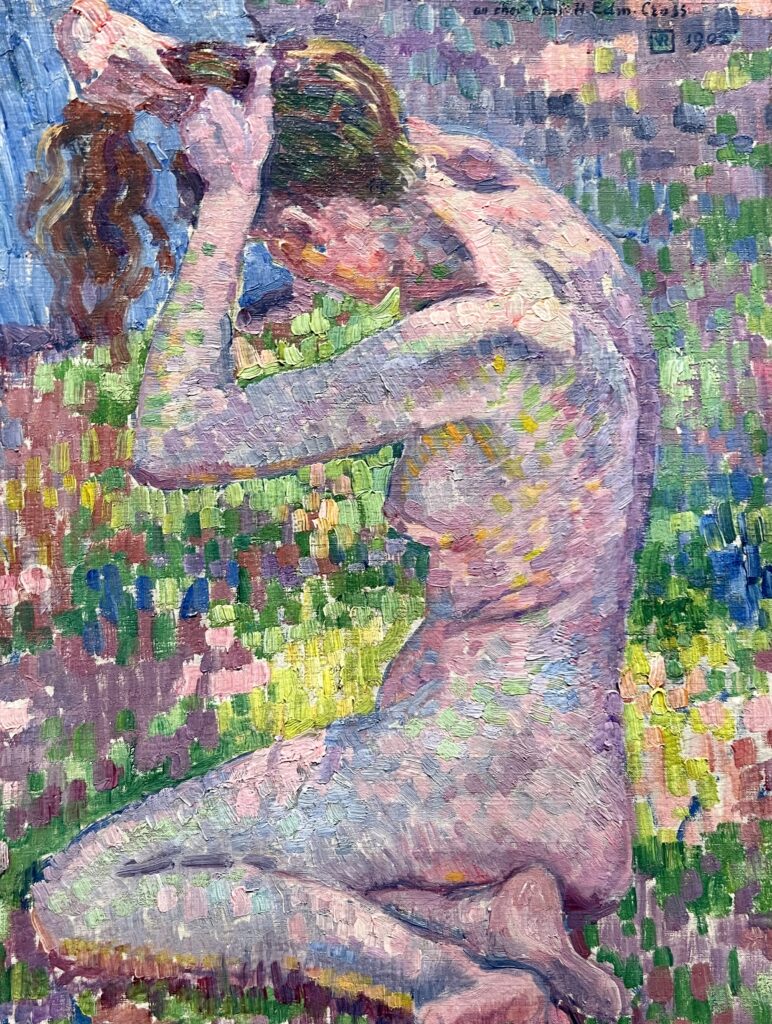
Huber Collection (1st floor)
The Huber Collection features modern and contemporary art, including works by prominent artists from the 20th and 21st centuries. it was compiled by Swiss ophthalmologist Othmar Huber, a man who recognized good art before it became marketable.
You’ll find artworks by Franz Marc, Oscar Kokoschak, Alex Jawlensky, Paul Klee, and Joan Miro. Many of the artworks were considered “degenerate” art by the Nazis. As Paul Klee told Huber, the art “does not reproduce the visual, but makes things visible.”
Palace State Rooms (ground floor)
The Albertina is housed in a historic palace. 21 of the State Rooms are preserved and open to the public. These staterooms provide visitors with a glimpse into the opulent lifestyle of the Habsburg monarchy.
There are also temporary exhibition halls on the main level and below ground.
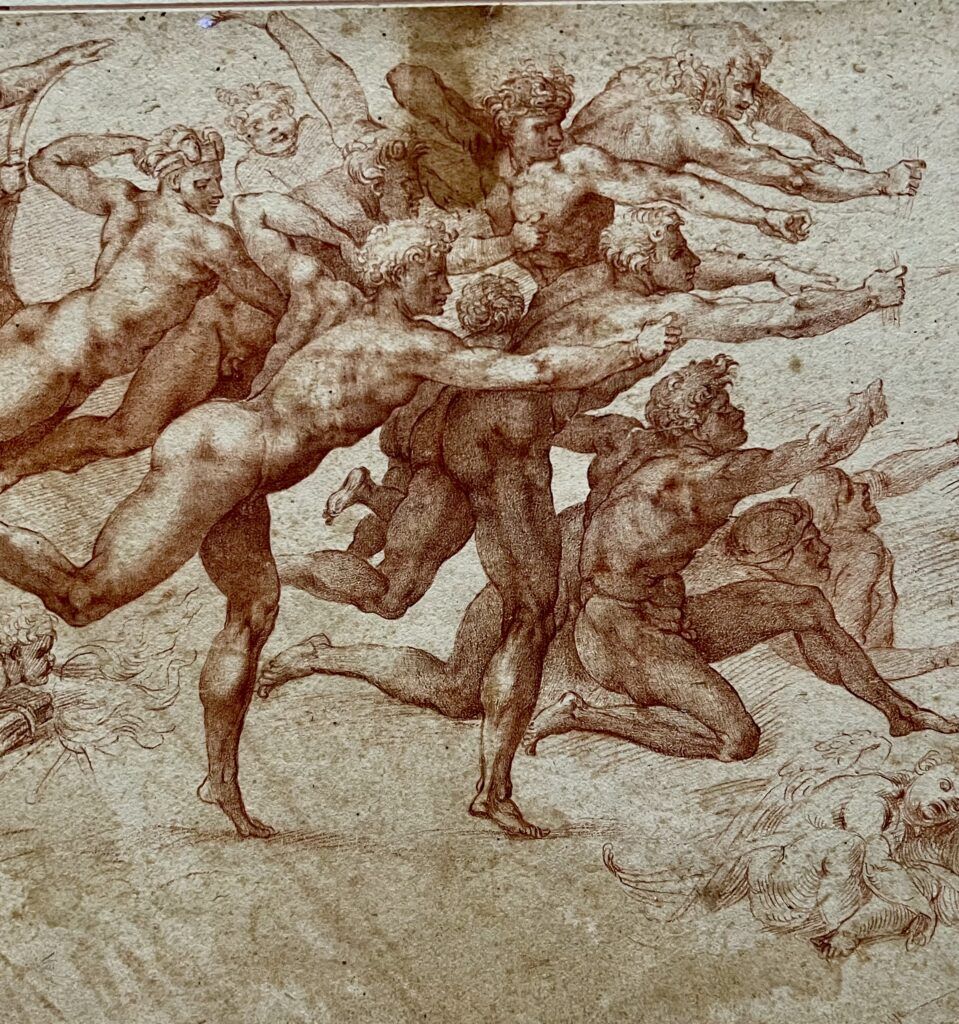
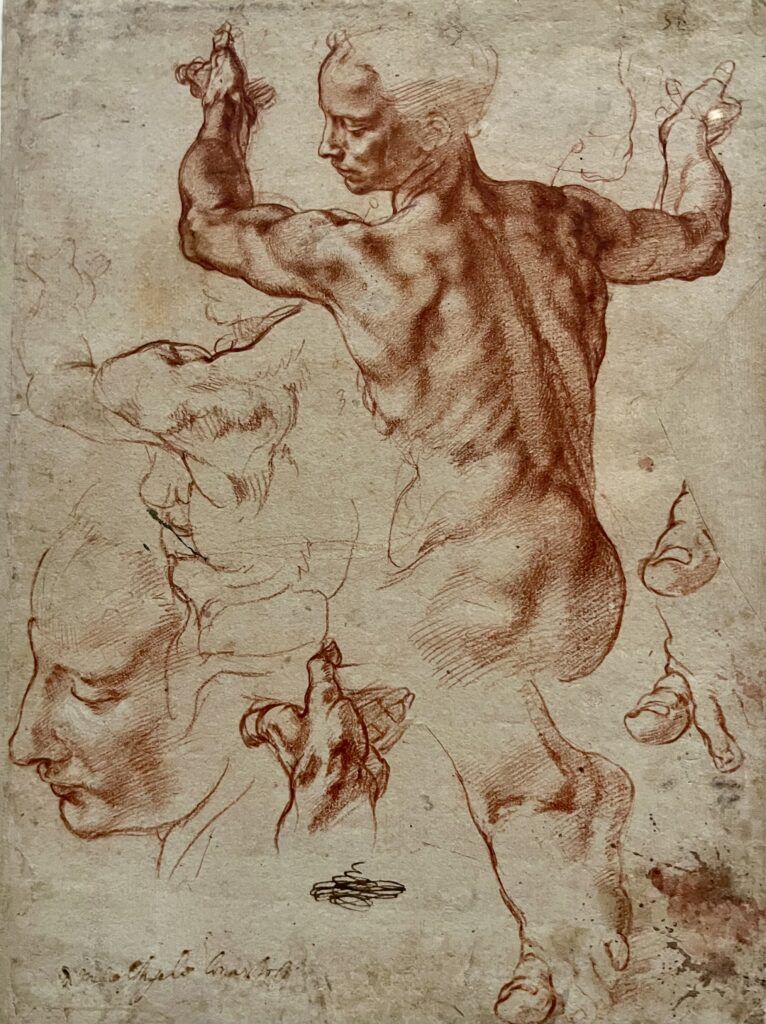
Guide To The Albertina: What To See
Here are some of the things you can’t miss at the Albertina.
Michelangelo Drawings
Michelangelo wasn’t just a sculptor. He was a renowned draftsman, whose drawings reflect style, ingenuity, and the birth of ideas.
Michelangelo was particularly fascinated with the male nude, inspired by ancient Greco-Roman marbles. It was his main subject and some of his drawings look like they are made of stone. To him, muscled masculinity was linked to the divine.
Of particular interest at the Albertina are his preliminary drawings for the Sistine Chapel and for the Battle of Cascina fresco intended for Florence’s Palazzo Vecchio.
Along with the artist’s drawings, you’ll also find reproductions of Michelangelo’s most famous sculptures including the Pieta, Bacchus, and the Dying Slave.
READ: Guide to the Michelangelo frescos in the Sistine Chapel
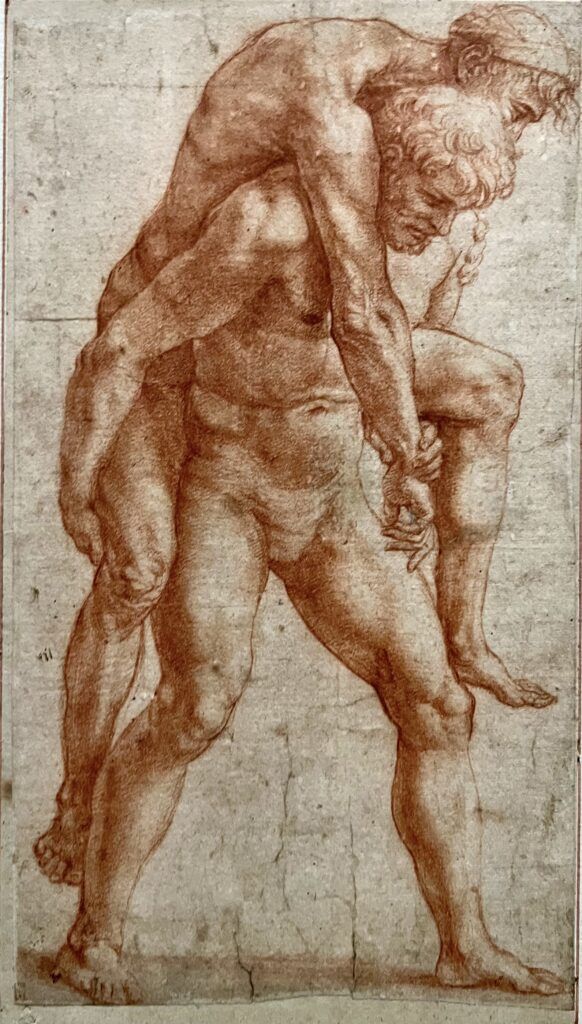
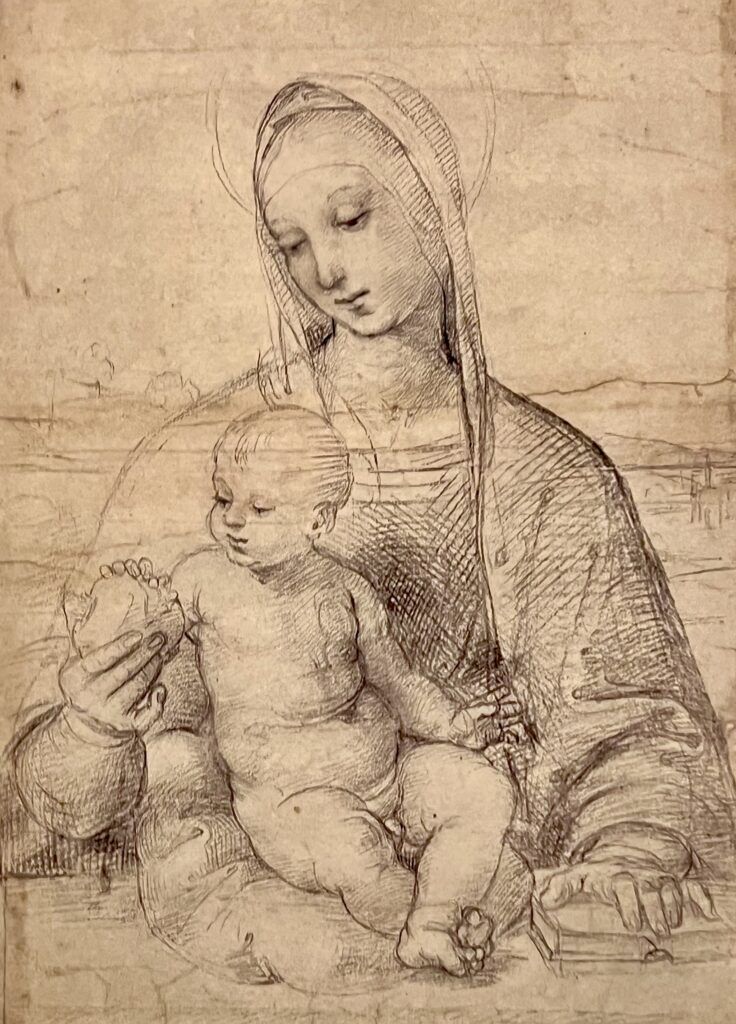
Raphael Drawings
Raphael was one of the “holy trinity” of Renaissance painters, along with Leonardo da Vinci and Michelangelo. He burst on the scene in the early 1500s and became the most famous painter in Rome, and hence Europe.
Raphael produced images of breathtaking beauty with genius compositions. He used drawings for brainstorming. In them, you can almost see his act of creation.
The Albertina is home to more than 140 Rapahel drawings. One of the most beautiful is Aeneas and Anchises.
It’s a drawing in red chalk. It was a predatory sketch for a painting in the Raphael Rooms in the Vatican Museums. Aeneas carries his farther on his shoulders as they escape from burning Troy. It’s a beautiful unity of age and youth, between weakness and rescue.
READ: Raphael’s 25 Most Famous Paintings
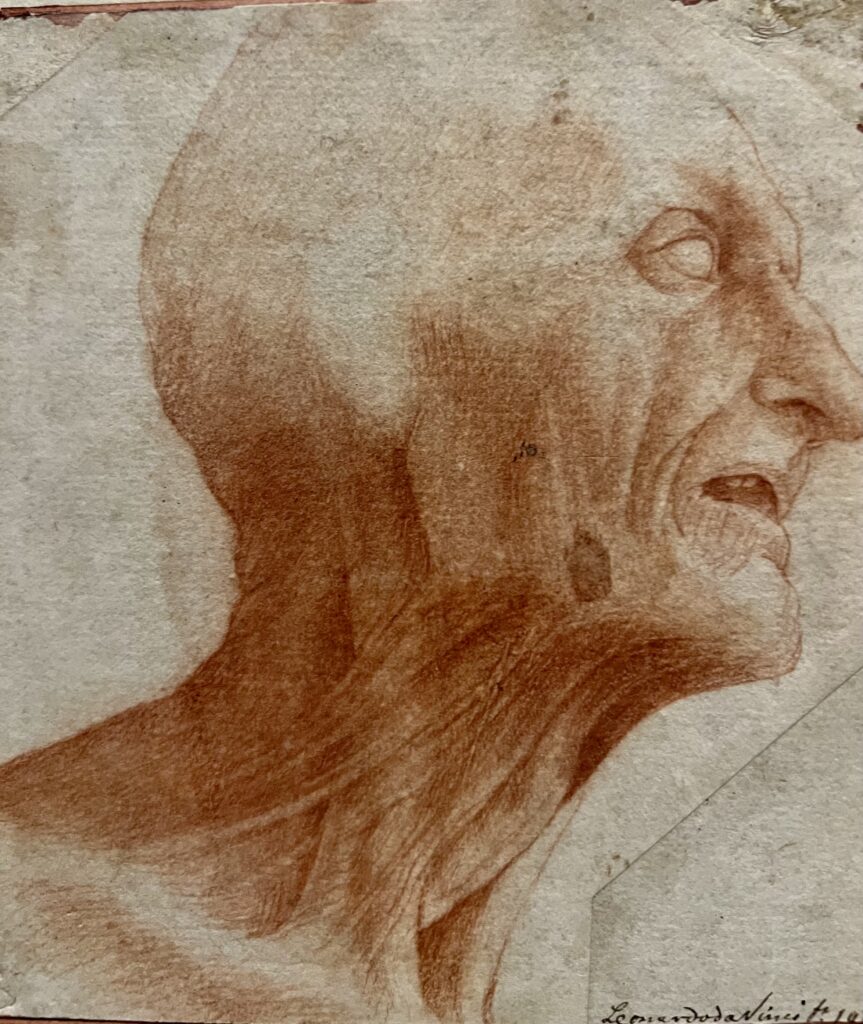
Leonard da Vinci Drawings
Leonardo is the undisputed master of the Renaissance. While very few (about 16) of his paintings survive, there are quite a few extant drawings. They reveal his incredible powers of observation.
The Albertina has several Leonardo drawings. I saw a sketch for The Last Supper fresco (the Half-Length Figure of an Apostle) and Muscle Head (shown above).
Like many of his drawings, they are studies of human anatomy. And they are executed with a superb finesse and delicacy.
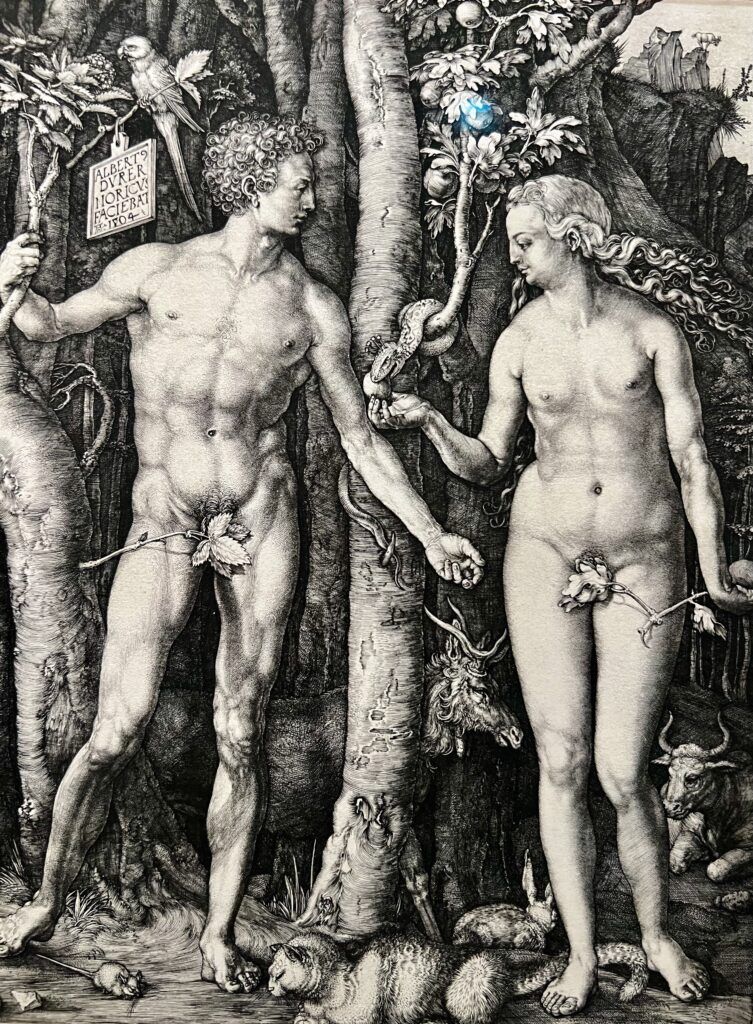
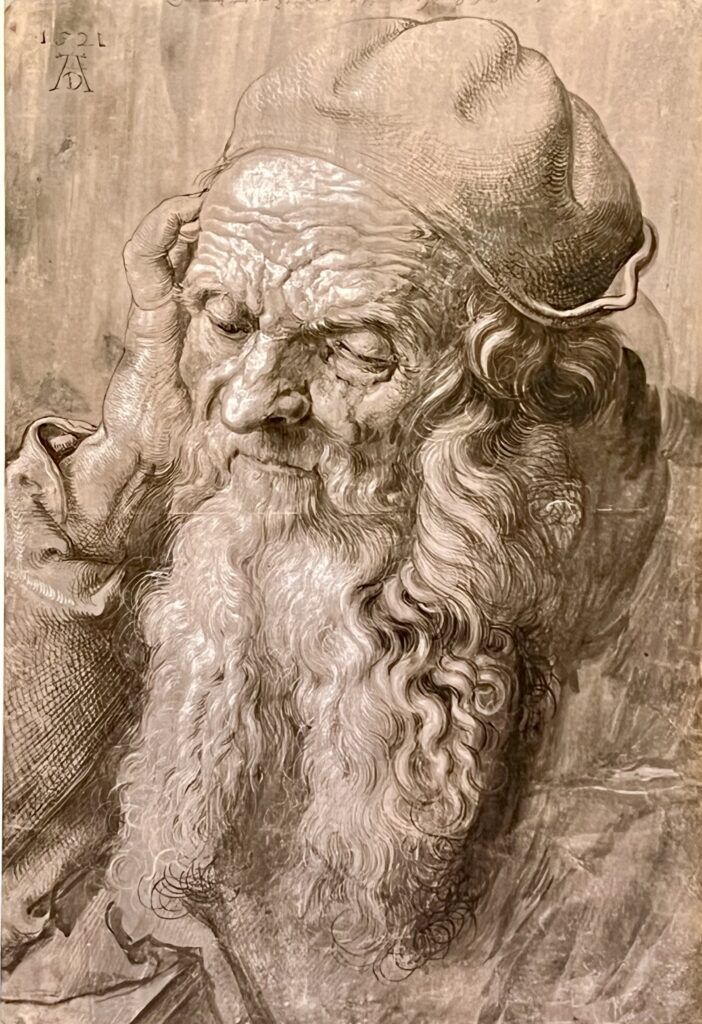
Albrecht Dürer Drawings
I’ve never seen so many Durer works in my life! There was an entire roomful of them. And, in fact, the Albertina boasts the world’s largest collection of Durer drawings, almost 140 works.
Durer is rightly considered one of the supreme geniuses of his time. In fact, art historian and painter Giorgio Vasari said that Durer would have been the world’s best painter “if only he had been born in Tuscany.”
His drawings are a revelation. He gives humans a fleshier and sculptural appearance.
The top piece in the Albertina is Durer’s famous drawing, Field Hare. It’s so fragile that it’s only on display occasionally. But you can (hopefully) see other works like Praying Hands, Adam and Eve, and Large Piece of Turf.
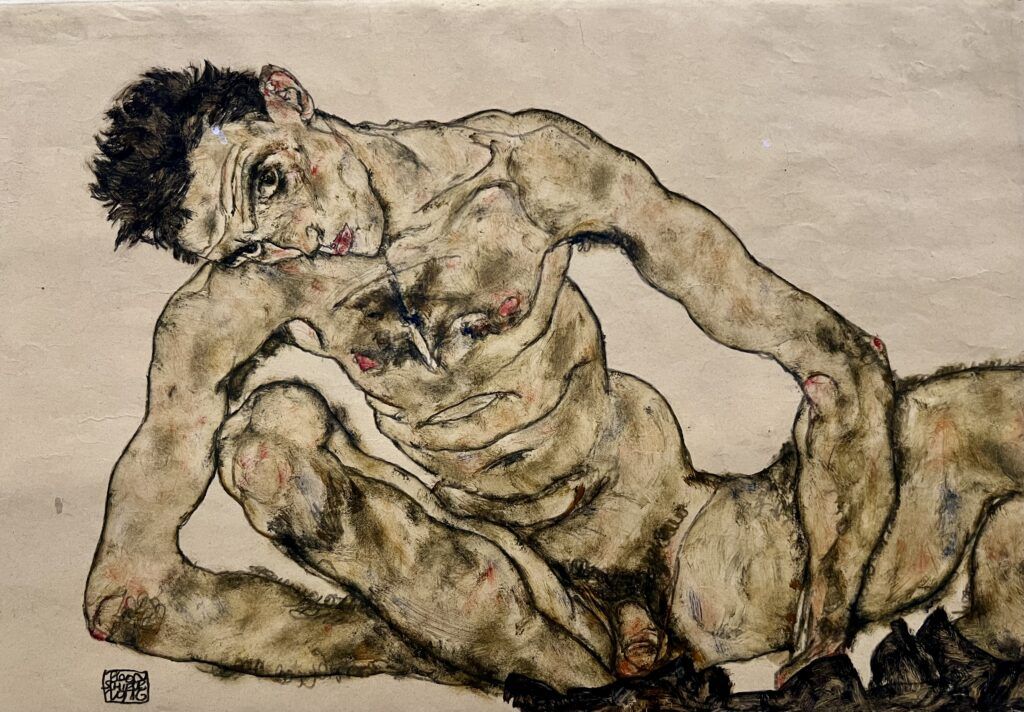
Egon Schiele Drawings
Schiele’s drawings are electrifying and seem modern even now. He seemed to specialize in the “ugly nude.”
Schiele was a Secession artist and influenced by Gustav Klimt. But, unlike Klimt’s pretty women, Schiele’s self-portraits are ruthless. He draws himself as an emaciated figure with long twisted limbs and hideous faces.
There are also a plethora of drawings of females. He portrays them in an unidealized and almost shockingly sexualized way.
Schiele’s drawings dramatically departed from prevailing conventions of portraiture and paved the way for the Expressionism. In them, you sense fear, rage, and loneliness.
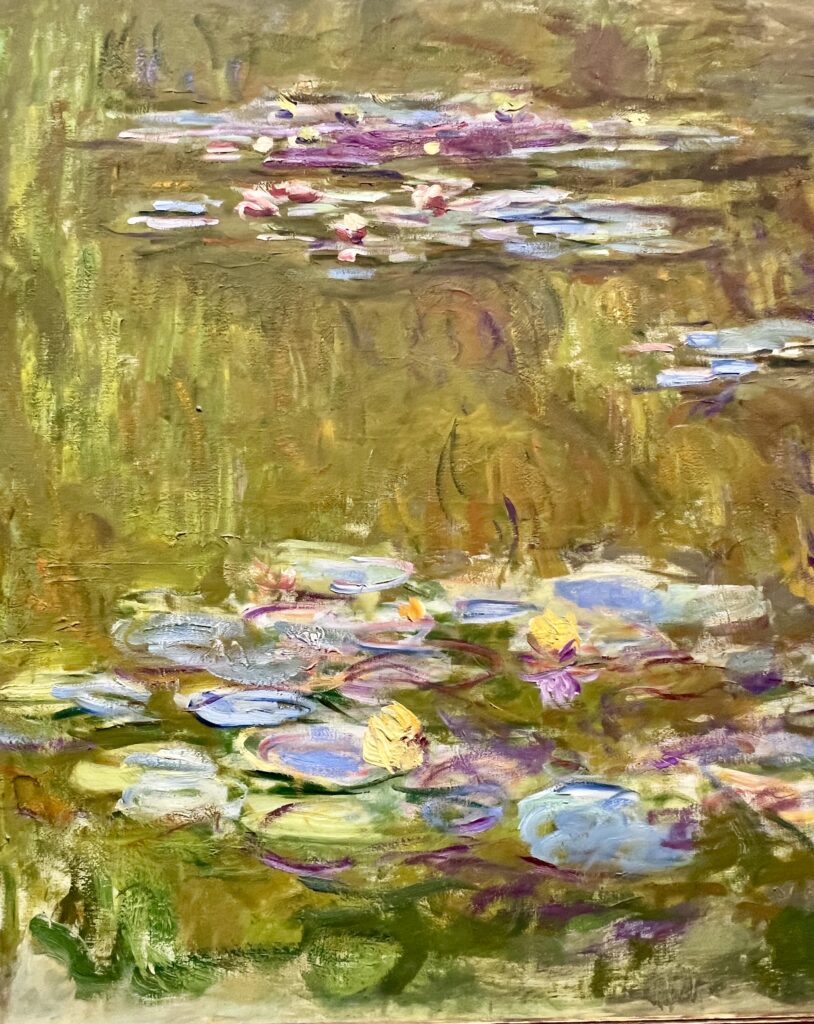
Monet Paintings
Monet is considered the proper founding father of Impressionism. The title of the exhibit “Monet to Picasso” is a bit misleading.
There are not all the many Monet paintings in the museum. But Monet fans will find a few, including one of his famous water lilies.
There are also a couple lovely landscapes from his time in the town of Vetheuil. In them, Monet captures the atmosphere of a hot summer day. The air is glistening with sunlight, captured by his brilliant colors and nervous brushstrokes.
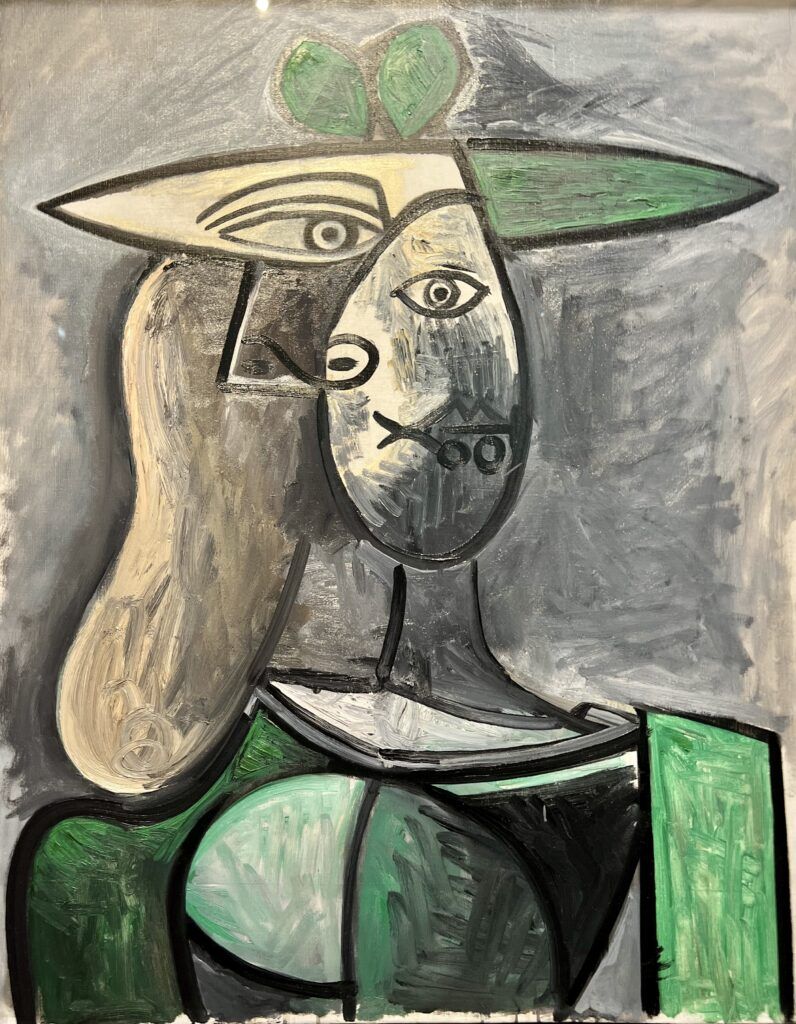
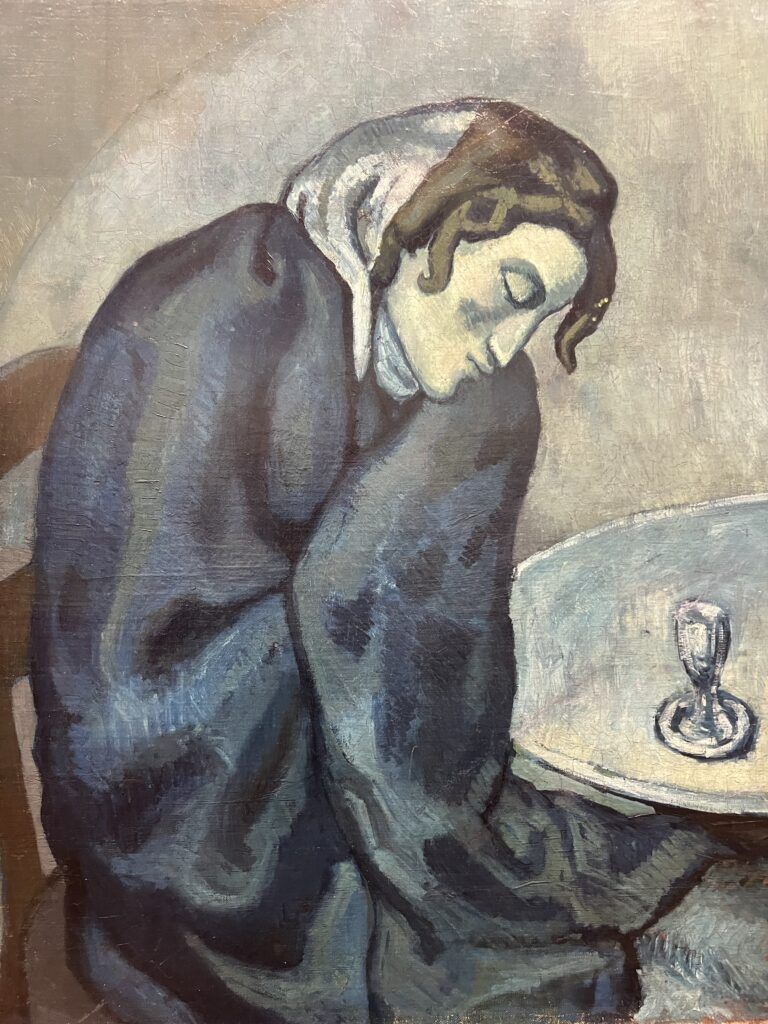
Picasso Paintings
Born in Malaga, Picasso was the greatest and most influential artist of the 20th century. The Albertina has artworks from all the important periods of his career — the Blue Period to Cubism to his late works.
My personal favorites were The Sleepy Drinker from his Blue Period and the Woman with them Green Hat from his Surrealism phase.
The Sleepy Drinker captures a quiet, introverted, and melancholy mood. The woman’s closed eyes and hidden hands give a sense of loneliness or abandonment. Picasso painted it after the death of his best friend, Casagemas, and it almost resembles him.
Woman with a Green Hat is a portrait of Picasso’s lover Francoise Gilot, who would go on to become an important painter in her own right. He painted the rather drab portrait after WWII, and it symbolizes the disintegration and tragedy of the war.
He portrays a woman with a smashed face and distorted eyes, which are the central motif. The only real color is green. Her eyes seem to follow you everywhere.
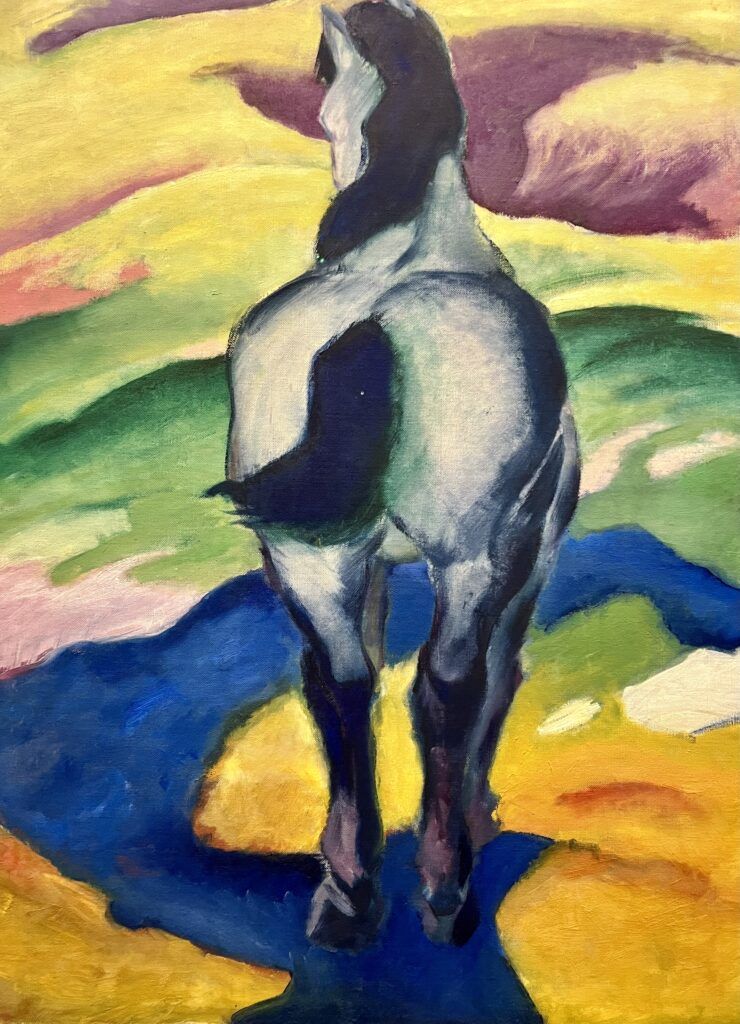
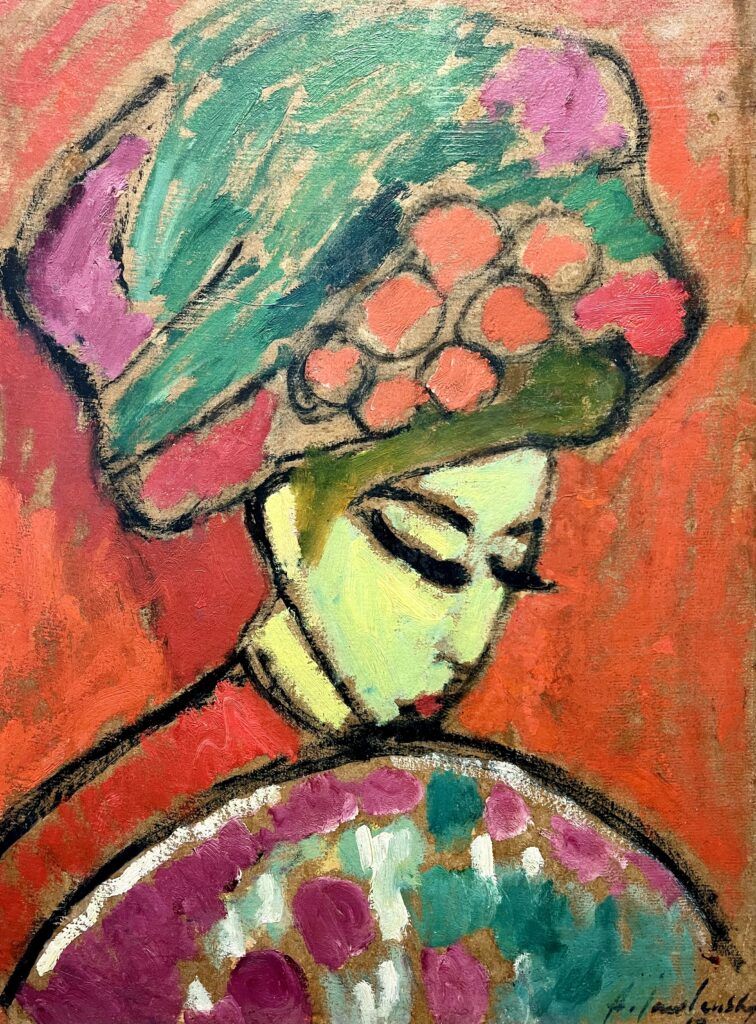
Blue Rider Paintings
The Blue Rider was a significant Expressionist art movement in early 20th century Germany that helped pioneer modern art. The group’s artists believed deeply in the emotional power of art and aimed to convey their inner feelings and spirituality through their works.
The name “Blue Rider” came from the color blue, which symbolized spirituality. The image of a horse and rider represented a journey toward new artistic horizons.
In the museum, you’ll find works by Wassily Kandinsky, Franz Marc, and Alexej von Jawlensky. Color played a major role in their paintings. They would place color between thick lines to create contrast and dimension.
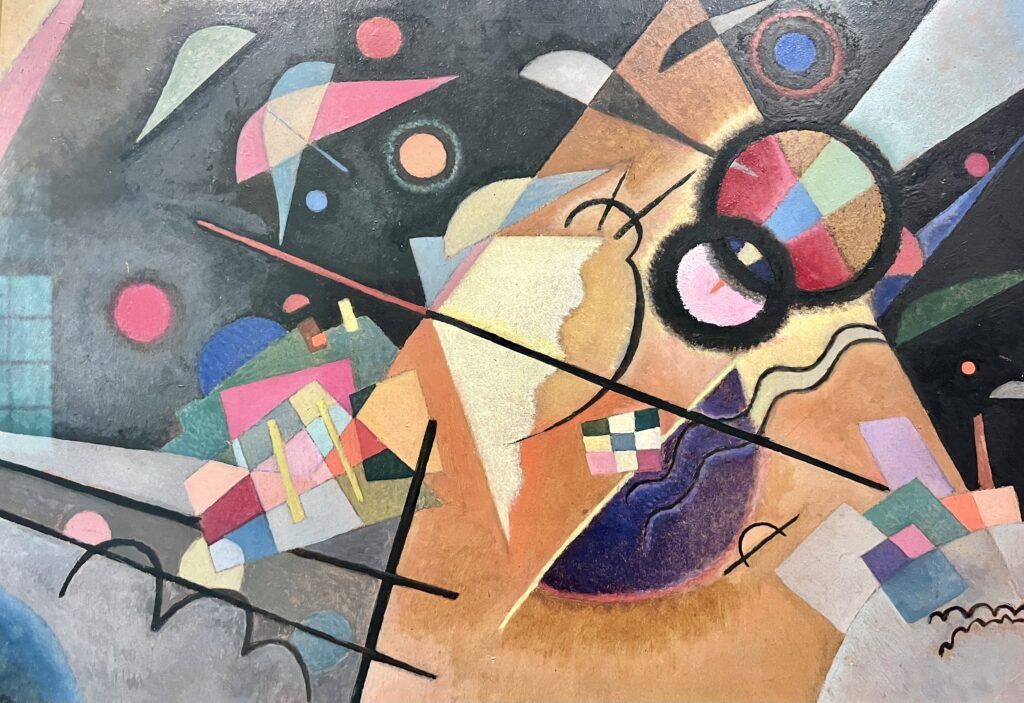
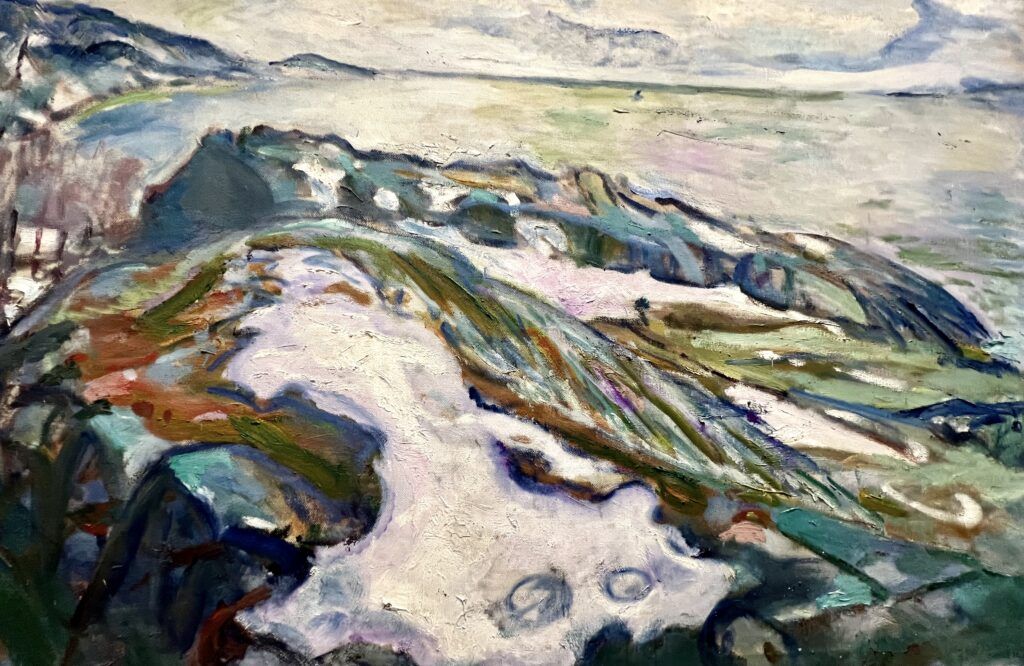
The Bridge Paintings
The Bridge, or Brücke, was the first group of Expressionist artists. The movement was found in Dresden in 1905. Its main protagonists were Ernst Kirchner, Emil Nolde, and Edward Munch.
The Bridge artists attached great importance to color and form that was independent from nature. Their works were unconventional and primitive, with African art as a primary influence.
At the Albertina, you’ll find works by Kirchner, Nolde, Munch, and Beckmann. The sole Munch that I saw was a melancholy winter landscape.
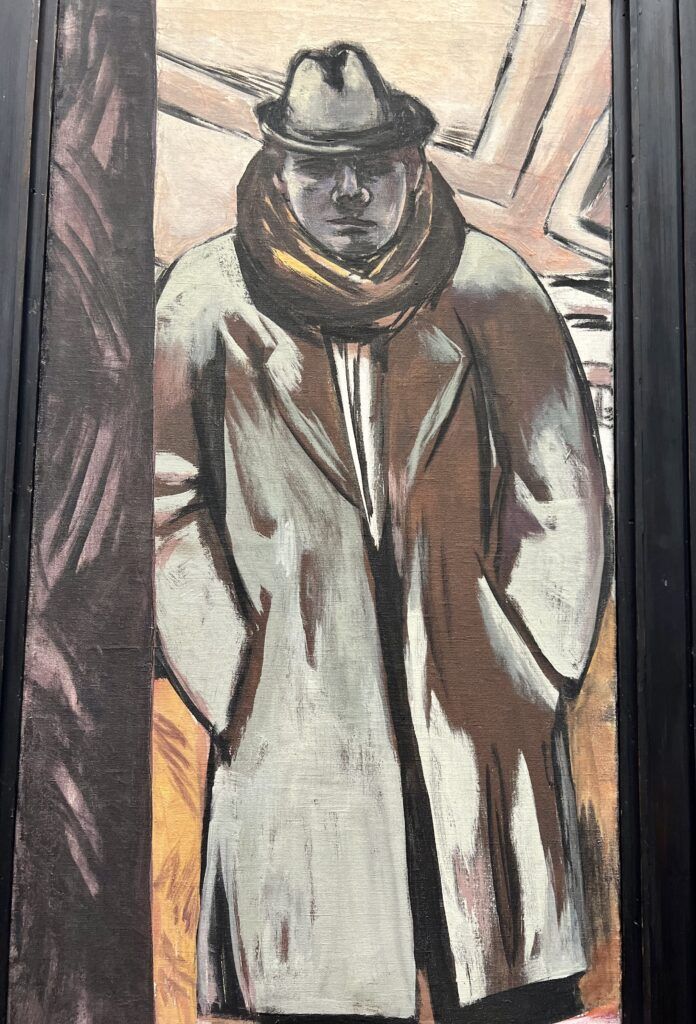
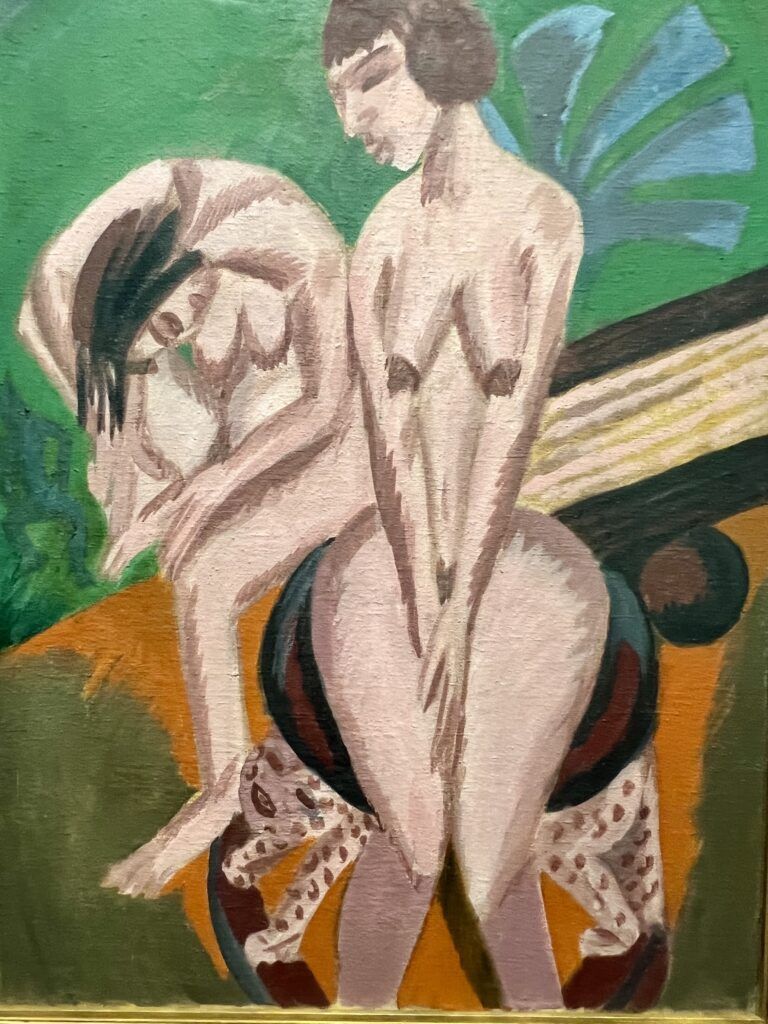
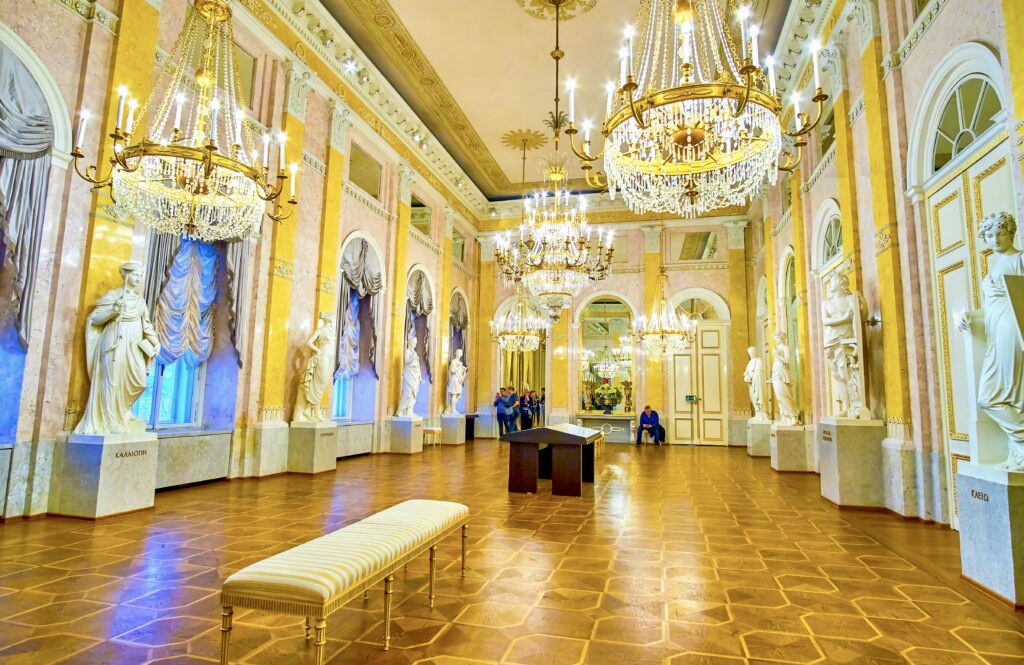
State Rooms
The State Rooms are quite magnificent and a great alternative to visiting the overcrowded Schonbunn palace.
The private rooms were the home of Maria Christina, Empress Maria Theresa’s favorite daughter and the only one allowed to marry for love.
The long tract of rooms has been fully renovated to their 1822 state. The walls are covered in silk tapestries and the gold wainscoting is divine.
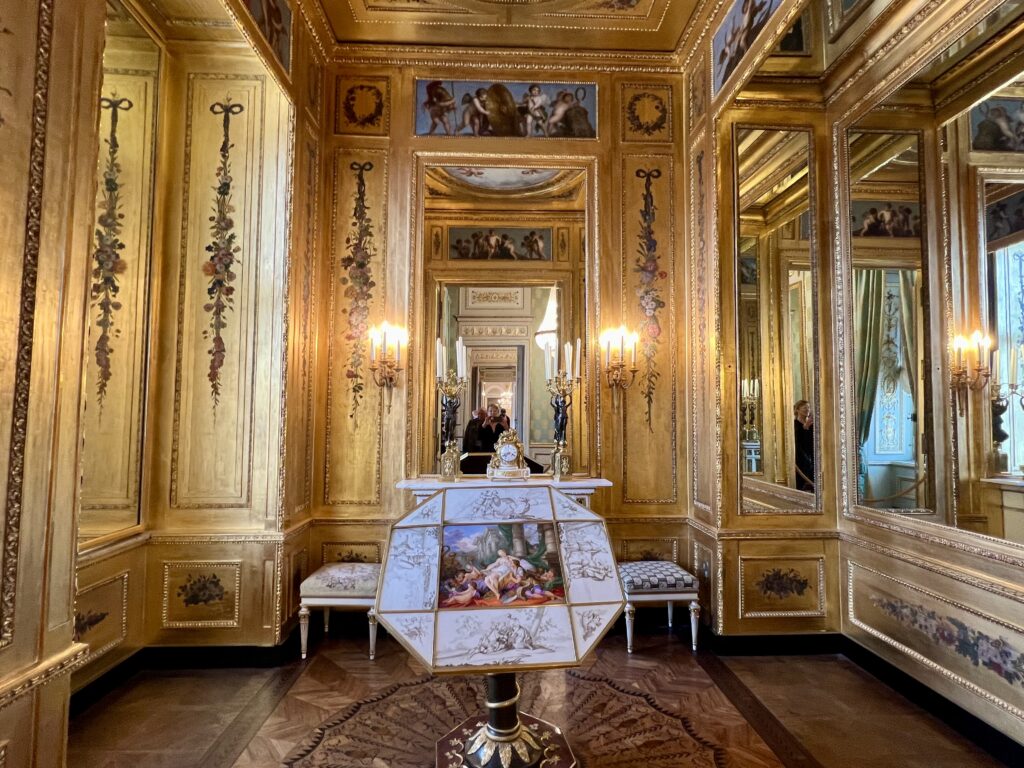
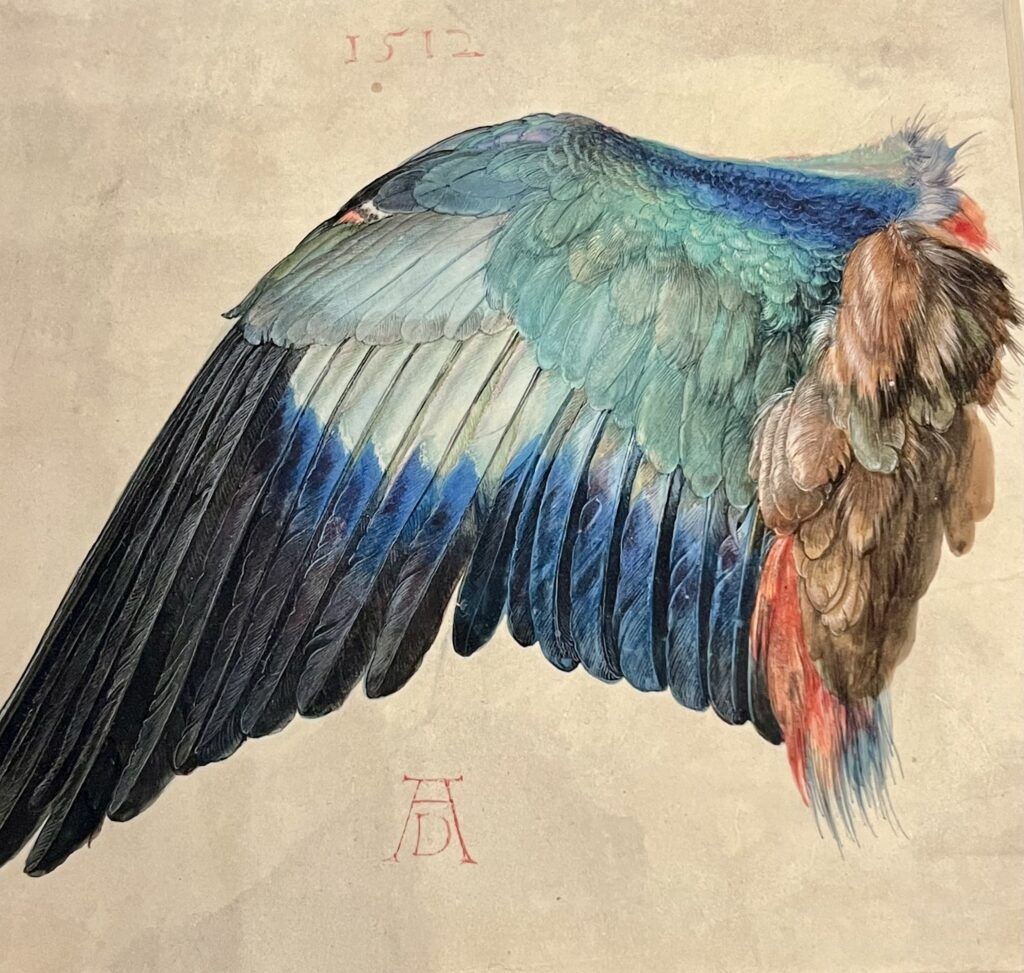
The most spectacular room is the Hall of Muses, with crystal chandeliers and colossal statues of Apollo and his muses.
There are artistic gems sprinkled throughout the State Rooms. For example, I came upon Raphael and Durer drawings.
Durer’s watercolor from 1512, Wing of a Blue Roller, is just glowing and gorgeous. The state rooms are also where you’ll find his famous Field Hare, if it’s on display.
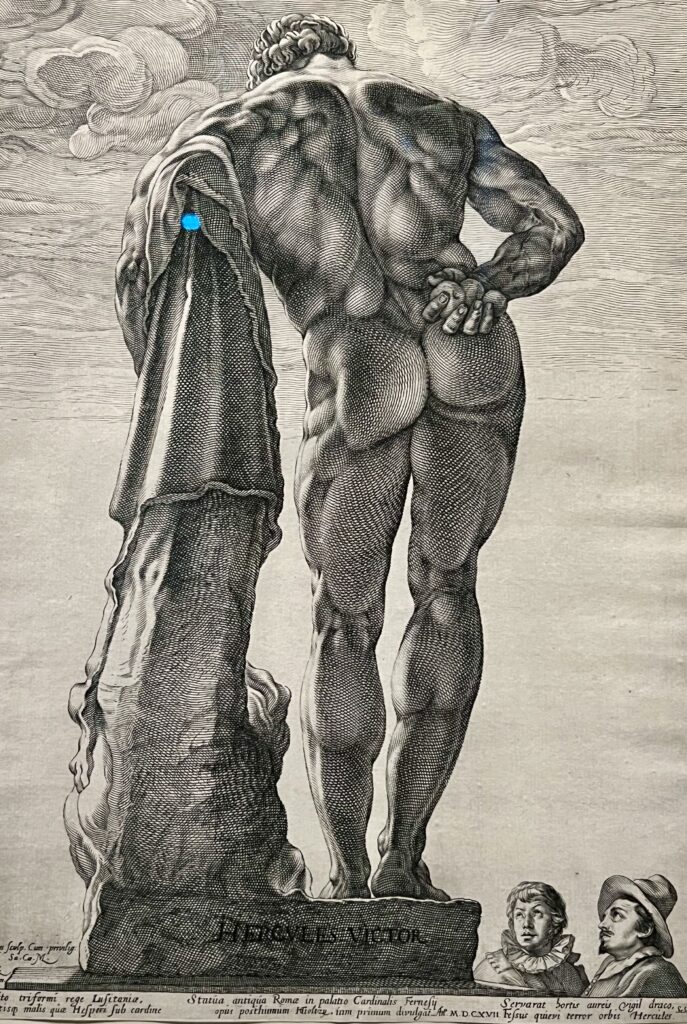
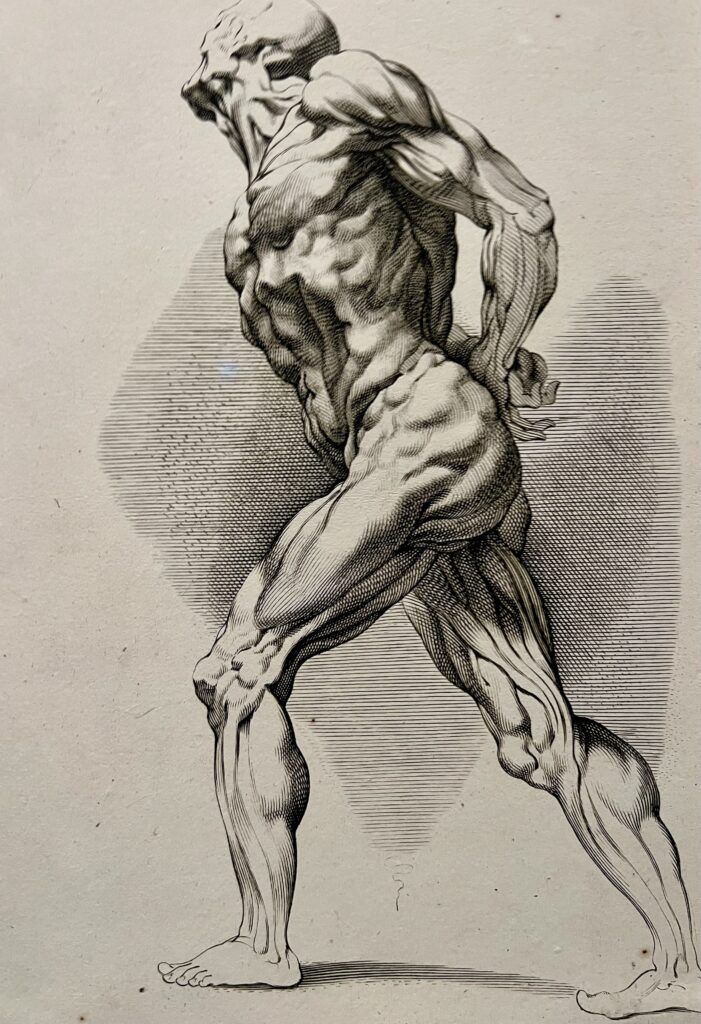
Practical Guide & Tips For The Albertina
Address: Albertinaplatz 1
Hours: Open daily from 10:00 am to 6:00 pm. On Wednesday and Friday night, the museum is open until 9:00 pm.
Tickets:
Tickets are 18.90 euros. The audio guide is 3 euros.
Click here to pre-book a skip the line ticket. You can also buy a combination ticket for the Albertina and the Albertina Modern. Admission is also included in the Vienna Pass.
Tours: The museum offers guided tours, but they are only in German.
How Long To Spend:
It depends on how much you want to see. It’s a large, diverse collection. But you can narrow your visit by focusing on the particular art period that interests you the most. The Monet to Picasso exhibit seems to be the most popular.

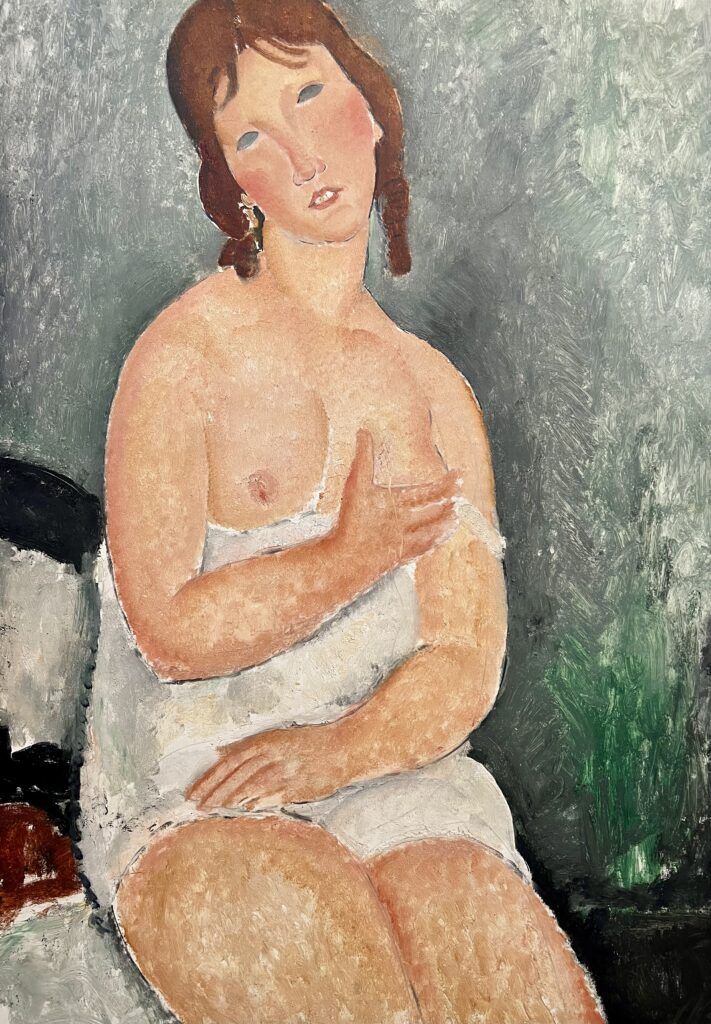
I would budget at least 2 hours for the museum, possibly more if you are using the audio guide.
Cafe: The museum has a rather posh cafe serving up Viennese dishes, the DO & CO Albertina. You’ll need to make a reservation.
I hope you’ve enjoyed my guide to the Albertina. If you’re planning a trip, you may find these other Vienna travel guides and resources useful:
- 3 days in Vienna itinerary
- guide to the Belvedere Palace
- guide to Klimt paintings in Vienna
- guide to the Beethoven trail in Vienna
- what to do in Vienna in winter
- best museums in Vienna
- guide to the Sisi Museum
- guide to the Kunsthistoriches
- guide to the Vienna Secession
If you need a guide to the Albertina, pin it for later.

